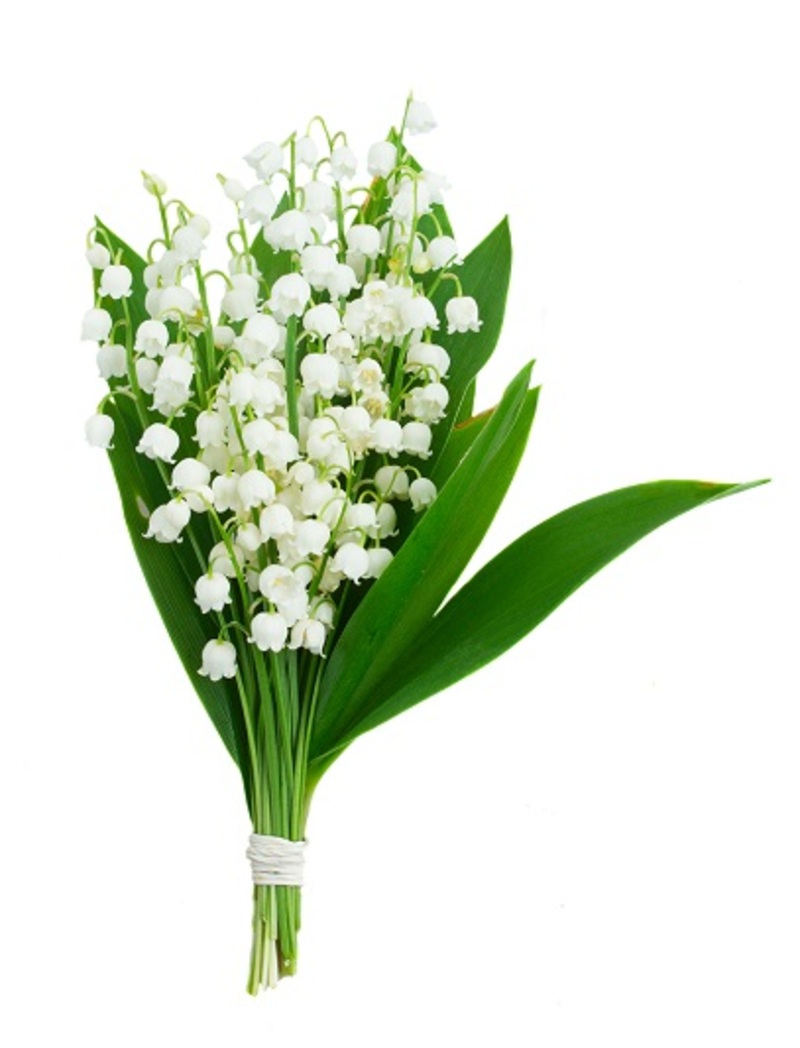Maximize Hydrangea Growth with These Care Tips
Posted on 25/08/2025
Maximize Hydrangea Growth with These Care Tips
Hydrangeas are a beloved garden favorite, treasured for their lush foliage and magnificent blooms. Whether you're a seasoned gardener or just starting your horticultural journey, understanding how to maximize hydrangea growth is essential for achieving a thriving, show-stopping display. In this comprehensive guide, you'll discover expert hydrangea care tips and strategies to encourage healthy growth, create vibrant flowers, and make your landscape the envy of the neighborhood.
Understanding Hydrangeas: An Overview
Before diving into the best practices for maximizing hydrangea growth, it's crucial to understand the different types of hydrangeas and their unique requirements. Hydrangeas belong to the genus Hydrangea and are available in several popular varieties:
- Bigleaf Hydrangea (Hydrangea macrophylla): Known for their large, rounded flower clusters.
- Panicle Hydrangea (Hydrangea paniculata): Features cone-shaped blossoms and is highly tolerant of sun.
- Oakleaf Hydrangea (Hydrangea quercifolia): Recognizable by their unique oak-like leaves and white, pyramid-shaped blooms.
- Smooth Hydrangea (Hydrangea arborescens): Produces large, dome-shaped flower heads, often in white or greenish hues.
- Climbing Hydrangea (Hydrangea petiolaris): A versatile vine perfect for walls and trellises.
Each variety has its own preferred conditions, but the core principles of hydrangea care remain similar across types. Tailoring your care to your specific hydrangea ensures the most robust growth and the fullest flowers.

Soil Preparation: The Foundation for Vigorous Growth
Choosing the Right Soil
To maximize hydrangea growth and blooms, start with the optimal growing medium. Hydrangeas thrive in rich, well-draining soil. Here's how to create the perfect foundation:
- Soil Type: Hydrangeas prefer loamy soil, rich in organic matter. This supports moisture retention without becoming waterlogged.
- Drainage: To prevent root rot, be sure soil doesn't stay soggy. If your garden has heavy clay or poor drainage, amend with compost, leaf mold, or aged manure.
- pH Adjustment: The pH of your soil affects not only hydrangea health but also flower color in some varieties, notably the Bigleaf hydrangea. Acidic soil (< 6.0) yields blue flowers, while alkaline soils (> 7.0) produce pink blooms. You can alter pH by adding garden lime (to raise pH) or elemental sulfur (to lower it).
Enriching Soil for Hydrangea Growth
Regularly replenish soil nutrients to maximize flower production. Mix in:
- Compost: Supplies essential nutrients and improves soil structure.
- Organic Mulch: Retains moisture and slowly releases nutrients.
- Slow-Release Fertilizer: Suitable for hydrangeas and encourages sustained growth throughout the season.
Hydrangea Light Requirements: Let There Be (the Right) Light!
Light plays a pivotal role in maximizing hydrangea growth. Hydrangea varieties have specific light preferences that must be met for them to flourish:
- Bigleaf and Oakleaf Hydrangeas: Thrive in partial shade, ideally with morning sun and afternoon protection to prevent leaf scorch.
- Panicle and Smooth Hydrangeas: Tolerate more sun and can thrive in full sun if soil moisture is maintained.
- Climbing Hydrangeas: Adaptable, but prefer some shade for optimal flowering.
Too much sun can lead to wilting and leaf burn, while too much shade results in leggy growth and poor blooming. Find a balance by observing the amount of light in your chosen spot and adjusting as needed.
Watering Strategies for Optimal Hydrangea Development
Hydrangeas are notably thirsty plants, especially during periods of growth and bloom. To promote healthy hydrangea growth, implement an effective watering routine:
Key Watering Recommendations:
- Consistency is Crucial: Keep soil evenly moist, but not waterlogged. Aim for about 1 inch of water per week, adjusting for rainfall and climate.
- Deep Watering: Instead of frequent shallow watering, water deeply to encourage roots to grow downward.
- Morning Schedule: Water early in the day to allow leaves to dry and reduce the risk of fungal diseases.
- Mulching: Mulch around your hydrangeas to reduce evaporation and maintain moisture.
Signs of overwatering include yellowing leaves and root rot, while underwatering manifests as wilting and brown edges. Fine-tune your routine based on your environment.
Fertilization: Feeding for Maximum Growth
Proper fertilization is a game-changer when it comes to hydrangea care for robust growth. Here's how you can ensure your plants have everything they need:
- Timing: Fertilize once in the spring, just as growth emerges, and again in mid-summer if necessary.
- Type: Use a balanced, slow-release fertilizer (e.g., 10-10-10 or 14-14-14). Specialty hydrangea fertilizers are also widely available.
- Application: Spread fertilizer around the drip line (the area beneath the outermost branches), then water thoroughly.
- Organic Amendments: Supplement with compost, bone meal, or fish emulsion for a natural nutrient boost.
Over-fertilizing can sometimes encourage leafy growth at the expense of flowers, so always follow package instructions and avoid heavy fertilizer applications late in the season.
Pruning Tips: Shape, Rejuvenate, and Encourage Blooms
Knowing how and when to prune is essential for enhancing hydrangea size and blooms. Different hydrangea types require distinct pruning approaches:
Pruning Guidelines by Hydrangea Type:
- Bigleaf and Oakleaf Hydrangeas: Bloom on old wood (stems from the previous year). Prune immediately after flowering by removing spent blossoms and thinning out weak or overcrowded stems.
- Panicle and Smooth Hydrangeas: Flower on new wood (current season's growth). Prune in late winter or early spring before new growth appears. Cut stems back by one-third for larger, more abundant blooms.
- Climbing Hydrangeas: Require minimal pruning. Remove dead wood and shape as needed, ideally after blooming.
Regular pruning keeps plants vigorous, improves air circulation, and enhances flower quality. Remember, incorrect timing may remove budding stems and reduce blooming potential.
Pest and Disease Management: Protecting Your Hydrangeas
While hydrangeas are relatively hardy, they're not immune to pests and diseases. Effective prevention and management are key to maximizing hydrangea health and vitality:
- Aphids and Spider Mites: Watch for curled leaves and sticky residue. Treat by hosing with water or using insecticidal soap.
- Powdery Mildew and Leaf Spot: Ensure good air circulation by spacing plants properly. Remove affected leaves, and apply fungicide if necessary.
- Slugs and Snails: Place crushed eggshells or diatomaceous earth around the base of plants to deter them.
- Root Rot: Avoid overwatering and improve drainage.
Regularly inspect your hydrangeas and take action promptly at the first sign of trouble to keep them in top shape.
Seasonal Hydrangea Care for Maximum Growth Year After Year
Caring for hydrangeas requires seasonal adjustments to ensure continued vigor and beautiful blooms:
Spring:
- Remove old mulch and replace with fresh organic mulch.
- Fertilize and amend soil as needed.
- Prune as appropriate for your hydrangea type.
Summer:
- Monitor soil moisture closely and water deeply during dry spells.
- Deadhead faded blooms to encourage further flowering.
- Watch for pests and diseases.
Fall:
- Gradually cut back on watering as plants begin to go dormant.
- Mulch heavily, especially in colder regions, to protect roots from winter freeze-thaw cycles.
Winter:
- If necessary, wrap plants with burlap or cover with frost blankets to shield from severe cold and drying winds.
- Prune panicle and smooth hydrangeas, if not done in late fall.
Following the rhythm of the seasons is essential for maximizing hydrangea growth and ensuring healthy perennial plants.
Expert Tips to Enhance Hydrangea Bloom and Size
After mastering the basics, implement these advanced techniques to unlock your hydrangeas' full potential:
- Pinching Back New Shoots: Encourage bushier growth by pinching back the tips of new shoots in early spring.
- Change Flower Color (Bigleaf Hydrangea): Manipulate soil pH to shift blooms between pink and blue--an eye-catching trick for garden variety.
- Boosting Bloom Size (Smooth Hydrangea): Cut stems back hard in late winter for larger, more dramatic flowers each season.
- Layering and Division: Propagate successful plants by layering lower branches or dividing mature clumps in early spring.
- Regular Monitoring: Walk your garden weekly to catch stresses, pests, or diseases before they escalate.

Troubleshooting Common Hydrangea Growth Problems
Why Aren't My Hydrangeas Blooming?
This is a frequent concern for hydrangea growers. Common causes include:
- Improper Pruning: Pruning at the wrong time removes flowering wood. Know your hydrangea's blooming habits.
- Insufficient Light: Too much shade reduces flower production.
- Over-Fertilization: Excess nitrogen promotes leaves at the expense of blooms.
- Frost Damage: Late spring frosts can kill flower buds. Protect plants if frost is forecast.
Leaves Turning Yellow or Brown?
This usually signals water stress, nutrient deficiency, or disease. Examine soil moisture, test pH, and inspect for pests. Correct issues promptly to restore plant health.
Conclusion: Grow Lush, Vibrant Hydrangeas With These Proven Tips
Maximizing hydrangea growth is achievable with the right care, patience, and a little horticultural know-how. By focusing on soil preparation, correct watering and feeding, timely pruning, and proactive pest management, you'll be rewarded with lush foliage and spectacular blooms year after year. Remember, every garden is unique, so observe your hydrangeas closely and adapt these care tips to your specific environment. Soon, your hydrangeas will become a vibrant focal point in your landscape that will inspire admiration and joy for seasons to come!
Ready to elevate your garden? Start implementing these hydrangea care tips today and watch your plants thrive!
Latest Posts
Revitalizing the Lifespan of Your Poinsettias
Flower Resilience: 12 Picks for Lasting Essence
Fresh, fragrant florals for a birthday delight






